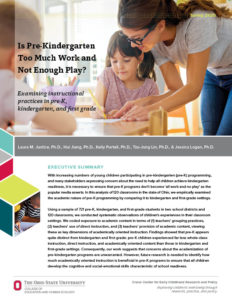White Paper
Authors: Laura M. Justice, Hui Jiang, Kelly Purtell, Tzu-Jung Lin, and Jessica Logan
With more and more children attending pre-kindergarten and expectations that children be “kindergarten ready,” concerns have emerged that preschools may be too academic in nature. Some argue that high academic expectations have begun to creep downward to the preschool level, and rightly wonder about the role of play in child development and its use in pre-K programming.
This white paper attempts to shed light on these questions and offers valuable information in the conversation regarding play and academics in pre-K. Crane researchers Laura Justice, Hui Jiang, Kelly Purtell, and Tzu-Jung Lin examined three measures of academic instruction in pre-kindergarten, and compared the experience of preschoolers with those in kindergarten and first grade.
The perception that pre-K is becoming increasingly academic, with little time for play, is based in part on the increased academization of kindergarten.
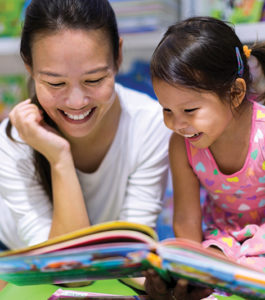
Who was involved in the study?
Researchers studied 721 children across pre-K, kindergarten, and first grade from 120 classrooms across two Ohio school districts.
How was “academic” defined regarding the nature of these classrooms?
The authors considered what was deemed to be academically oriented instruction, based on three dimensions:
- A teacher’s grouping practices – specifically the use of whole-class instruction (as opposed to small group or 1-on-1 instruction),
- Use of direct instruction, and
- Amount of “academic” content, namely literacy and math.
What did they find?
The researchers found that pre-K children experienced far less whole-class instruction, direct instruction, and academically oriented content than those in kindergarten and first grade.

Direct instruction was a commonly observed instructional method to deliver content across all three grades, but there was a significant increase in its use from pre-K (16%) to kindergarten (25%). Moreover, kindergarten and first-grade classrooms tended to invest more time in text reading (15%), writing (12%) and worksheet (8%) than pre-K classrooms (10% on text reading, writing and worksheet combined).
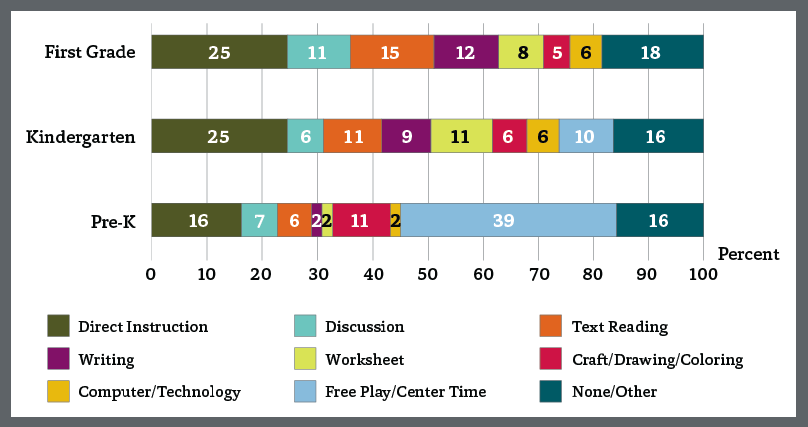
Another key data point worth highlighting is that pre-K children experienced far more time in free play than their slightly older peers: Free play in pre-K occurred 49% of time, compared to 11% in kindergarten. Only 18% of the time in pre-K was observed targeting literacy and math content. This pattern changed drastically in kindergarten, where 59% of the time was spent teaching literacy and math, and this further increased to 65% for first graders.
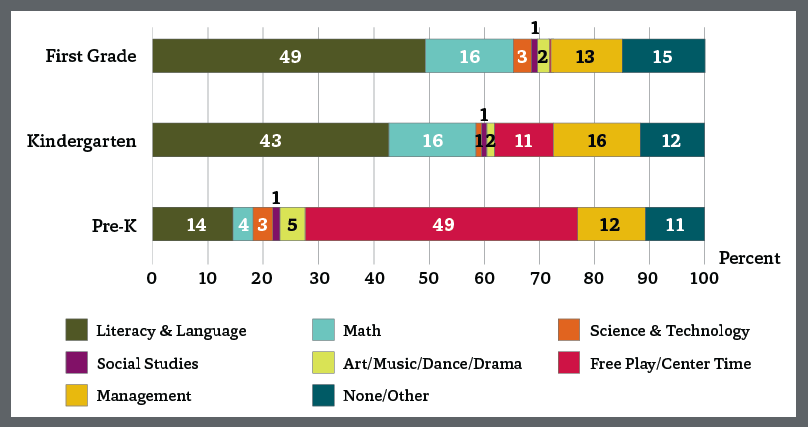
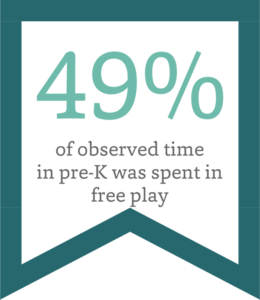
Overall, these findings also suggest that concerns about the academization of pre-kindergarten programs may be unwarranted.
Future research is needed to identify how much academically oriented instruction is beneficial in pre-K programs to ensure that all children develop the cognitive and social-emotional skills characteristic of school readiness.
To learn more about the study and its findings, access the full white paper at the link below.
Did you find this information interesting? Join the conversation!
Below are some sample tweets to help you get started.
Has pre-K become all work and no play? Crane researchers attempt to answer this question in our latest white paper: bit.ly/PreK-academization
To find out if pre-K is all work and no play, Crane researchers analyzed the academic nature of pre-K programming by comparing it to kindergarten and first-grade settings in 120 Ohio classrooms: bit.ly/PreK-academization
DID YOU KNOW… that the Crane and Schoenbaum Centers have an entire body of work on the transition to kindergarten? From research to practitioner notes to tips for parents, the collective body of work aims to deepen our understanding and better support all children during this important transition.


